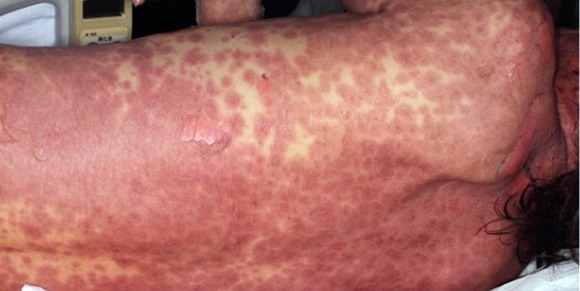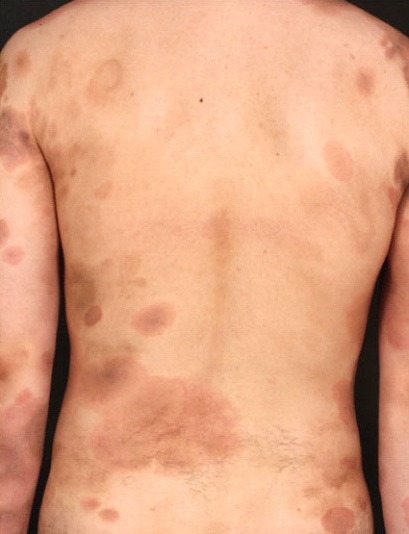Drug Eruption

A drug eruption is an adverse reaction caused by drugs. Mostly adverse reactions occur due to immune reflection. The body thinks of a drug as an alien substance.
The types are described by eruptions such as Erythema Multiforme and Maculopapular (MP). Severe eruptions include Stevens-Johnson Syndrome, Toxic Epidermal Necrolysis (TEN), and Drug-induced Hypersensitivity Syndrome (DIHS). Severe eruptions are treated with steroids, immunoglobulin, and Plasma Exchange Therapy.
Our hospital offers treatment tailored to each patient by searching what is right for each patient. We have sought to solve the cause for severe drug eruptions through clinical research.
Lymphoma

Ninety percent of Malignant Lymphoma is Cutaneous T-cell Lymphoma (CTCL). CTCL includes the diseases such as Bacterial Polyp, Sepang Syndrome, adult T-cell Leukemia Lymphoma, and undifferentiated lymphoma of large cells. In primary Cutaneous B-cell Lymphomas (CBCL), there are primary cutaneous follicle center lymphoma, and primary cutaneous diffuse large B-cell lymphoma.
We diagnose it by running pathological and genetic tests. Treatment is conducted with anticancer drugs and radiation doses. Recently, some new anticancer drugs were approved. The numbers of choices for patients have been increasing.
Our clinical research teams have worked on investigating a biomarker that diagnoses bacterial polyps in the early stages and we aim to use it at the clinic one day.

